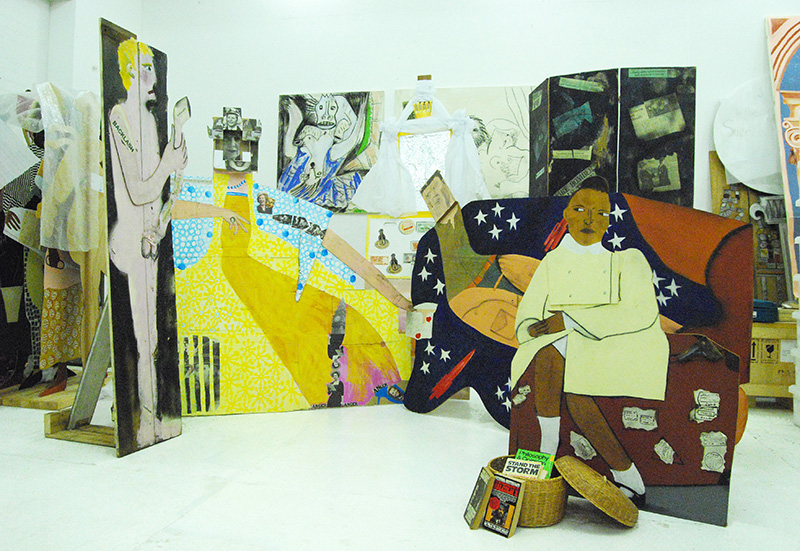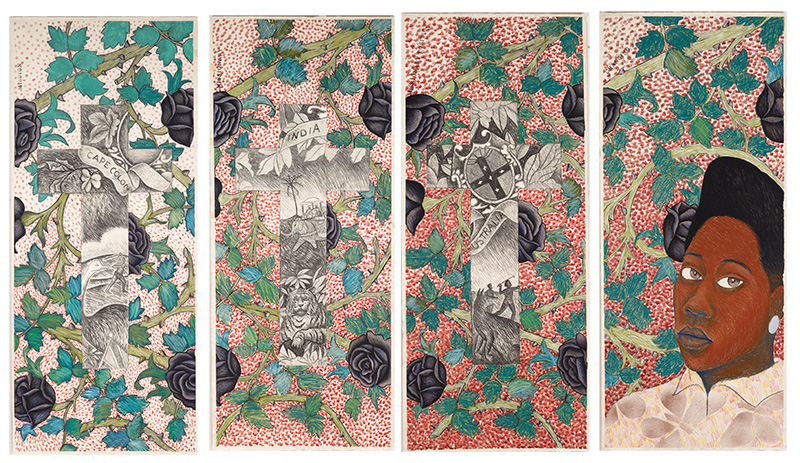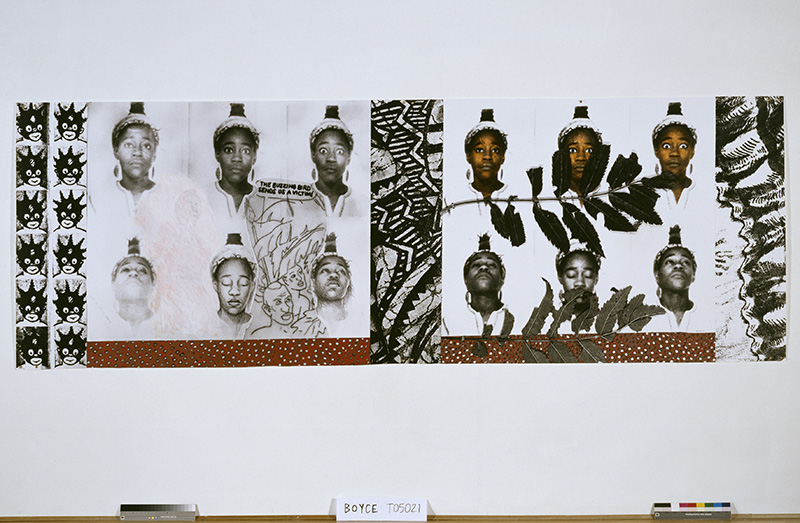ART-PRESENTATION: The Place Is Here
 In 1982, a group of artists and thinkers met in Wolverhampton at the First National Black Art Convention, to discuss the “form, future and function of Black Art”. Two years later, the second working convention took place in Nottingham. What constitutes “Black Art”, or the ”Black Arts Movement” was, and continues to be, heavily contested.
In 1982, a group of artists and thinkers met in Wolverhampton at the First National Black Art Convention, to discuss the “form, future and function of Black Art”. Two years later, the second working convention took place in Nottingham. What constitutes “Black Art”, or the ”Black Arts Movement” was, and continues to be, heavily contested.
By Dimitris Lempesis
Photo: Nottingham Contemporary Archive
The group exhibition “The Place Is Here” at Nottingham Contemporary traces some of the urgent and wide-ranging conversations that took place between black artists, writers and thinkers in Britain in the ‘80s. Bringing together 100 works by over 30 artists and collectives, the exhibition spans painting, sculpture, installation, photography, video and archival displays, exploring a pivotal decade for British culture and politics. The exhibition does not present a chronological survey. Instead, it is conceived as a kind of montage. For many of these artists, montage allowed for identities, histories and narratives to be dismantled and reconfigured according to new terms. The exhibition assembles different positions, voices and media to present a shifting portrait of a decade while refusing to pin it down. The presentation is structured around four overlapping groupings, each of which is titled after a work on display: “Signs of Empire”, “We Will Be”, “The People’s Account” and “Convenience Not Love”. Together, they show how a new generation of practitioners were positioning themselves in relation to different discourses and politics, amongst them: Civil Rights-era “Black art” in the US, Pan-Africanism, Margaret Thatcher’s anti-immigration policies and the resulting uprisings across the country, apartheid, black feminism, and the burgeoning field of cultural studies. Artists were addressing these issues by reworking and subverting a range of art-historical references and aesthetic strategies, from William Morris to Pop Art, documentary practices or the introduction of Third Cinema to the UK. Participating artists: John Akomfrah, Rasheed Araeen, Martina Attille, David A. Bailey, Sutapa Biswas, Zarina Bhimji, Black Audio Film Collective, Sonia Boyce, Vanley Burke, Ceddo, Eddie Chambers, Rotimi Fani-Kayode, Joy Gregory, Sunil Gupta, Mona Hatoum, Lubaina Himid, Gavin Jantjes, Claudette Johnson, Isaac Julien, Chila Kumari Burman, Dave Lewis, Mowbray Odonkor, Maybelle Peters, Pratibha Parmar, Keith Piper, Ingrid Pollard, Donald Rodney, Veronica Ryan, Marlene Smith and Maud Sulter
Info: Curators: Nick Aikens & Sam Thorne, Nottingham Contemporary, Weekday Cross, Nottingham, Duration: 4/2-30/4/17, Days & Hours: Tue-Sat 10:00-18:00, Sun 11:00-17:00, www.nottinghamcontemporary.org



